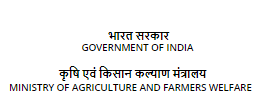CIFRI Circular Cage
Background:
The mostly used cages in inland open water cage culture are small rectangular (6 m x 4
m x 4 m) or square (5 m x 4 m x 4 m) sizes considering the management skills and financial capacity of the small-scale farmers. Based on the underwater images, it is observed that the dead zone existing in 4 corners of the rectangular and square cages abruptly stops the unhindered swimming behavior of the fish or even injures the mouth and eyes of the fish due to dashing against the dead-end wall. Certain biological and physiological factors and behavioral patterns of many priced species like IMC are thought to be the main reasons for their slow growth and injuries in the small rectangular and square cages. Apart from this, recently GI floated on inflated barrels, and HDPE pipes-based circular cages were introduced in India. These circular cages are of high cost and could not provide a stable platform around the cage. The safety during net cleaning, feeding, and net exchange is a real concern.:
Technology Details:
Volume-wise, the present designed large HDPE circular cages of 16 m diameter are cheaper than the HDPE rectangular cages, existing HDPE pipe-based circular cage, and GI-based circular cage. In this context, CIFRI’s initiative to reduce the cost of the cage to make it affordable to the common fishermen will go a long way in resource and employment generation. The present Circular HDPE cages are structurally sturdier than rectangular cages and therefore can withstand a higher degree of wave action and storms. The cage will provide a huge space and continues the net wall without forming any dead corner. Hence many priced species like IMC can be grown. The cage structure provides a 1m width stable and safe platform.:
Advantages of the CIFRI Circular cage:
• Stable floating structure/platform:
• Catwalk/walking and more working space:
• No additional floats, cage structure acts as floating material


